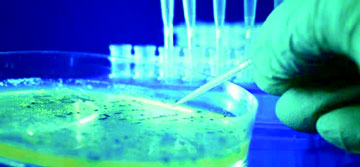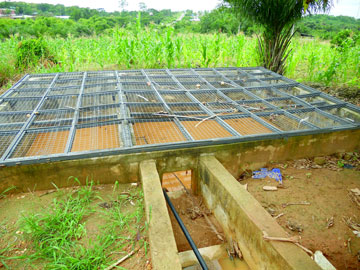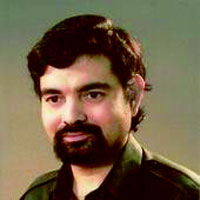Water Resources Management
With a Special Reference to India's Urbanisation
Dr. Amartya Kumar Bhattacharya
Abstract
With a population of one sixth of mankind India today is showing a steady growth of its economy. Although its economy is largely agro-based with the major population living in rural areas the ongoing development indicates a clear trend towards rapid urbanization. With fast rise in the urban population the problem of supplying clean water and sanitation is becoming more acute. Some of the main reasons for the urban water shortage are wastage in water supply and distribution network and at the consumer ends. While there is a good need for developing new water sources, management of the developed resources and using the established assets judiciously and efficiently is the real need of the hour.
Index Terms - Rain water harvesting, Urbanization, Waste water reclamation, Water recycling.
1. Introduction
India, a nation of 1.2 billion, the second most populous in the world, is maintaining a steady growth of its economy. Although it has a primarily agro-based economy there is a trend towards rapid industrialization. A recent estimate shows that about 73% of its population lives in rural areas as against 27% in metropolitan cities and urban centres. Of the urban population about 25% live in slums and squatters. 64% of the urban population is not connected to sewerage system and about 20% are without safe drinking water. India's urban population has grown from 17% in 1951 to 33% in 2001. This trend is likely to continue in the coming few decades.
2. Indian Water Scenario
The UN Charter of 2002 accepts the Right to Safe Water with respect to safety, affordability and accessibility as a basic human right. Water is the most precious natural resource and is the most critical element in any kind of development planning. We should aim at providing adequate water supply at suitable pressure for various uses such as, domestic, irrigation, drinking water, sanitation, industrial, commercial, construction and other uses and at the same time protecting the environment. India today ranks 133 out of 180 nations in availability of water and 122 out of 130 nations in water quality. While the monsoon extends for about 3 to 4 months, over a large part of the country, it rains only for about 30 days or less in a year. Hence, there is a fairly large requirement of storage of rain water for use during the long dry months.
 |
Irrigation uses over 80% of available water as the practices adopted are outdated and largely wasteful. In the world today there are improved systems available whereby the same amount of crops can be produced using only about 20% of the irrigation water presently being used. So, water conservation is an urgent issue with enough storage by rain water harvesting, economizing on water use, reducing waste to the minimum, recycling and reusing of used water.
3. Urban Water - Quantity and Quality
Due to global warming, climate change and various other factors the availability of water in the rivers and lakes is diminishing at an alarming rate. As a result of excessive withdrawal of ground water and corresponding negligible recharge by natural process the ground water table is steadily dropping. Also, contamination of ground water due to arsenic, various salts and saline water intrusion in the coastal areas is a great public health hazard.
Some of the major reasons for non-availability of adequate water in the urban areas are- leakage in pipe lines ; overflow from overhead tanks; use of filtered water where it is not really necessary, such as, construction, industry, gardening, leakage and wastage from taps, and other wastages due to lack of public awareness. Water pressure in pipe lines frequently drops due to some users installing on line pumps to draw more water for themselves depriving the others.
In Indian cities the major problems on water quality consist of:
- Microbial contamination of drinking water supply systems
- Geogenic and anthropogenic contamination of ground water
- Pollution of surface water sources
Some of the essential actions necessary to ensure that the piped water supply remains safe and sustainable include preventing contamination and minimizing water losses. Contamination in pipelines may arise from-
- Intermittent supply
- Low water pressure and,
- Leakage in pipelines.
Water loss up to fifty percent or more may be accounted for by:
- Leakage in pipelines, joints and valves,
- Overflowing service reservoirs,
- Illegal tapping of water from pipelines and non-metered house connections.
4. URBAN WATER NEEDS
The various water needs in urban community may be classified as domestic namely, drinking, cooking, bathing, washing, flushing toilets, gardening, washing cars, cattle and pets, hospitals, educational institutions, sports complexes, transport terminals and railway stations, commercial and entertainment centres, industry, fire fighting, roads and pavement washing, public bath and swimming pools etc. Besides these requirements, a large provision must be made for various water losses which work out to at least 10% of the estimated consumption.
The urban water management policies should include the political will to make it happen, full involvement of the consumers, and monitoring and implementation of the projects with full co-operation of the stake holders.
Of all the domestic uses toilet flushing and bathing consume about 70% of water and there is scope to economize on these water uses. The used water with some treatment can be re used in gardening, fire fighting, and toilet flushing etc. The major components in water management system should include assessment and optimization of supply, demand management, participatory and transparent management system, market-based regulatory mechanism, and combining authority with responsibility. The Urban Water Resources Management System should be a coordinated effort of Central Government, State Government, local bodies, autonomous agencies, Government Undertakings, NGOs, and community organizations.
5. Water Distribution Management
The management of water distribution system poses numerous challenges to the metropolitan cities in India. These include:
- Identification of customer needs and perception
- Use of performance assessment tools
- Improvement of reliability and efficiency
- Development of tools to assess the conditions of water mains
- Development of pro-active, cost-efficient water main renewal programs
- Development and use of new technologies for water main renewal schemes
- Adopting new, innovative materials for pipelines
- Optimum use of database management and information technology
- Use of Integrated GIS with hydraulic and water quality models
- Improving the operating efficiency of the entire water system
In the coming decades large sum of money is likely to be invested in the Indian metros on water distribution renewal schemes. The main action plan will include:
- The customer will play an important role in Water Distribution System Management
- The need to use tools to develop a cost effective renewal program
- The need to use an efficient information system management
- The need to use computerized tools to monitor performance of the water distribution system
- The need to improve efficiency in energy consumption and utilization of human resources
- The need to use benchmarking techniques to improve the operating efficiency of the entire distribution system
6. Rain Water Harvesting
Rain Water Harvesting is useful for effective water conservation and management. The process consists of capturing and storing rainfall to prevent its runoff, evaporation and seepage for its efficient utilization and conservation. The most feasible option is to harvest the rain water at the place where we get the rain water namely, streams, storm water drains, roof tops, pavements, gardens etc and store it in the natural sub-surface for subsequent recovery and use. This is an efficient method to utilize a large quantity of water which otherwise goes as waste to the sea.
Harvesting rain water is essential for the following reasons:
- Rain water is perhaps, the best source of fresh water
- The rain comes only during a limited period in the whole year and, if not conserved this fresh water may not be available for the rest of the year
- If not harvested most of the precipitation will run off and literally go waste
- Failure to harvest the rain water will increase flooding of the low lying areas
Some of the benefits of rain water harvesting are:
- Ground water table will rise improving water quality and yield of aquifers
- Salinity of ground water will reduce
- Very useful for gardening, landscaping and other uses where filtered water is not needed
- Augmentation of water supply system and sustainability of drinking water source
The major policy issues involved in implementation include:
- Government organizations should come forward for providing technical and financial support
- Proper coordination between Central Government, State Government and concerned local bodies
- Grant incentives to individuals and agencies adopting approved rain water harvesting schemes
- Create public awareness to adopt the schemes in individual and public interest
7. Waste Water Reclamation
Rapidly increasing demand, fierce environmental opposition to new sources and drought have given a new urgency to the search for dependable water supplies in the arid western states of the USA. While California suffers from persistent drought, in Los Angeles alone large quantity of tertiary-treated water gets dumped into the ocean every day. That water could be used to irrigate agricultural crops, landscaped areas, golf courses, and flush toilets in high-rise buildings. The US western states can no longer afford to continue "wasting" its wastewater. There is a lot of interest among the western cities of USA in making use of their treated wastewater.
 |
Reclaimed water is an uninterruptible supply. That is why it has become a powerful incentive in the California area for reclaiming and reusing the wastewater. In water-short urban areas of California, as well as in cities like Denver, Colorado and Phoenix, Arizona that face similar problems, substituting reclaimed waste-water where potable-quality supplies are not needed is an attractive alternative. Comparison with existing supplies may make look reuse more expensive, but developing new freshwater sources will almost always cost a lot more. Reuse will look better and better as the marginal cost of new supplies increase, because all the low cost supplies have already been developed.
8. Case Study – Kolkata
The Kolkata (Calcutta) Metropolitan Area is the second largest urban agglomeration in India with an area of 1,380 sqkm, a population of over 12 million, having 3 municipal corporations, 38 municipalities and a large number of non-municipal urban units. Kolkata city proper has an area of 187 sqkm and a population of 4.5 million and in addition a floating population of 2 million. Till 1910 Kolkata was the capital of British India and had the distinction of having the first major water supply and sewerage scheme next only to London.
During the coming 15-20 years large amounts are being spent in distribution system renewal. The customers have to play an important role in management of the water distribution systems. A need has been felt to use effective computerized tools to implement and manage cost effective renewal programs. The implementation of the plan is being taken up in several phases. The operating and maintenance costs must be met by revenue earned through user charges. Future programs till 2015 include- utilizing existing systems, renovation of the old mains, integration of systems, and replacement of ground sources by surface systems, reducing wastage by adopting appropriate technology and developing public awareness and better quality surveillance. Ground water cannot be taken any more as a long term solution as in many areas iron and fluoride are found exceeding the permissible limits. Arsenic contamination is common in shallow aquifers. Over extraction of ground water with insufficient natural recharging of the aquifer is a positive public health hazard.
The problems confronting better water management are: adequate and timely cash flow, sustainability and cost recovery, inter-institutional coordination, complicated and often conflicting rules and regulations and multiplicity of development agencies with ill-defined scope.
The way forward is considered as: harmony between political will and sound technical approach, improved revenue collection, introduction of rational water rates safeguarding the interest of the weaker sections of the society, preparation of realistic database using GIS and other appropriate high tech applications, decentralized planning and implementation, transparency with involvement and support from the community.
9. Conclusion
The main problem in the Indian metropolitan cities is not so much the development of the water resources but the management of developed resources and using the established assets judiciously and efficiently. The challenge of fresh water scarcity is second only to the global warming. The phenomenon is closely linked with desertification and deforestation. Hence, the aim should be to reduce water consumption, Reduce water wastage in supply and distribution and, Recycle and Re-use water to the fullest extent possible. Rain water harvesting and waste water reclamation should be used effectively to augment the existing water supply system.
About the Author:
 |
Dr. Amartya Kumar Bhattacharya is currently the Chairman, MultiSpectra Consultants and can be contacted at 23, Biplabi Ambika Chakraborty Sarani, Kolkata – 700029, West Bengal, INDIA. E-mail: dramartyakumar@gmail.com |
References
1. Proceedings of the Institution of Engineers (India)- 20th Indian Engineering Congress, Kolkata, Dec 2005.
2. Nath, K J (2005) - World Water Scenario, Conference in Kolkata on Water-Vision 2020
3. Sinha Ray, P(2005)-Rain Water Harvesting, Conference in Kolkata Water-Vision 2020
4. Gupta, S – Housing Strategy for Sustainable Urban Development- Seminar in IEI, Kolkata, August 2000.
5. Deb, A K – Water Distribution Management- Seminar in IEI, Kolkata, Aug 2000.
6. Sengupta, BK- Water Supply in Calcutta Metropolitan Area: Problems and Prospects- Seminar in IEI, Kolkata, Aug 2000.
7. Prendergast, J (1991)-Waste Water Reclamation –Report in Civil Engineering Journal of ASCE (IS).